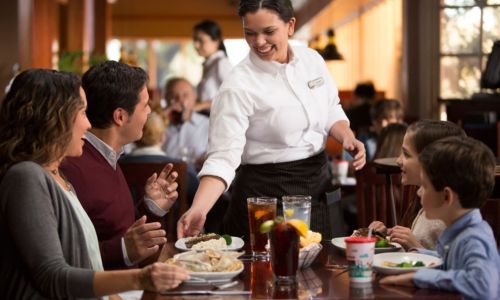Suggestive selling, or upselling, is a common best practice for increasing restaurants’ average check size and when done properly, it should also improve overall customer satisfaction. Developing a suggestive selling culture doesn’t happen overnight, but with the right direction and a defined plan to reinforce the behavior, it can be accomplished in a reasonable time-frame. Think for a second about the last time you ordered a sandwich from Subway – did the employees offer you chips and a drink? I bet they did. But how has Subway ensured that this happens on a consistent basis?
They have established a culture with suggestive selling as a cornerstone that is alive and well throughout the organization. Here are five basic tips for implementing a successful suggestive selling program:
- Create a “buzz” by communicating program objectives and benefits to employees
This starts with communication to individual store managers and trickles down to frontline employees. Having a suggestive selling program is great, but it does not guarantee success; there needs to be complete buy-in from field employees, and they need to have a vested interest in the program’s success. This is best achieved by including an element of recognition and/or reward for employees that exhibit the desired upselling behavior.
- Empower your employees to make standard and/or customized upselling suggestions to customers
This depends on the nature of your business and the objectives of your suggestive selling program. For some restaurant types, a standard upselling pitch is sufficient (not ideal), while others may require different suggestive selling approaches. Either way, it’s important for employees to feel empowered to make upselling suggestions in a way that contributes to customer satisfaction through some level of personalization, thereby enhancing the customer’s experience.
- Measure – Recognize – Reward – Coach
Like with any initiative, there needs to be a process for managing and monitoring results to ensure program success. Through our experience with clients, the “X-factor” with a suggestive selling program is the element of recognition and reward. Employees who are publicly recognized and rewarded will continue to demonstrate upselling behavior and inspire their colleagues to do the same. For example, for most of our programs TrendSource mystery shoppers reveal themselves at the end of their transaction and publicly praise the employee if they successfully engaged in upselling behavior, or privately point out the areas where they fell short to the manager, so they can provide appropriate training.
- Watch the incremental revenue come pouring in
Once your managers and franchisees see the revenue impact, there is no turning back. This type of program is one of the quickest and most effective ways to drive sales throughout your organization. If you aren’t seeing a significant increase in revenue, reevaluate your program, because something’s most likely not being executed correctly.
- Develop a suggestive selling culture
Inevitably, over time a culture of suggestive selling will reveal itself, and incremental revenue will start to flatten out, BUT the impact on your organization will be unequivocally improved. With a culture of suggestive selling firmly established, your organization can easily add elements to the ordering and checkout process that will support this behavior and continue to move your company forward.
TrendSource executes suggestive selling programs for some of the largest food service providers in the world, and we continue to deliver benefits that far outweigh program costs. In fact, our clients typically see a minimum 2% growth in their combo, promotion and beverage incidences year over year. For an example of a successful suggestive selling program, view this case study from a current QSR chain client who experienced over $4.2 million in incremental revenue.


